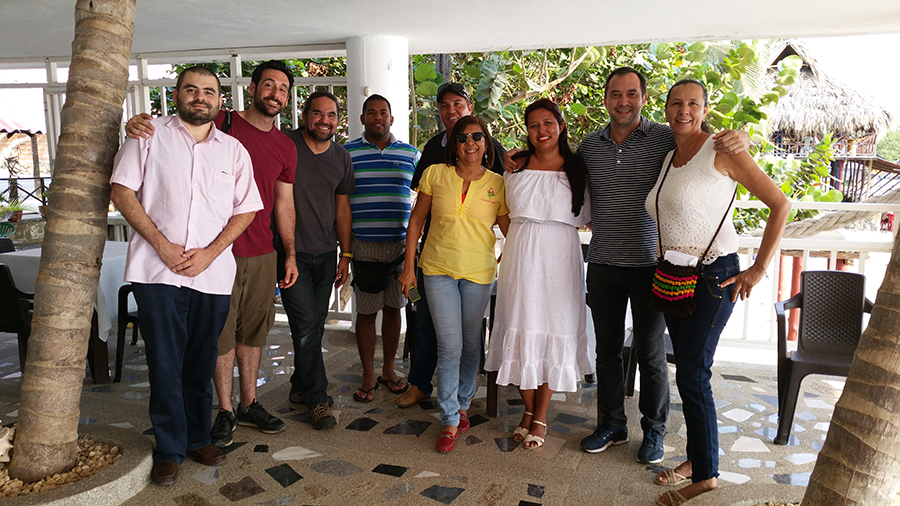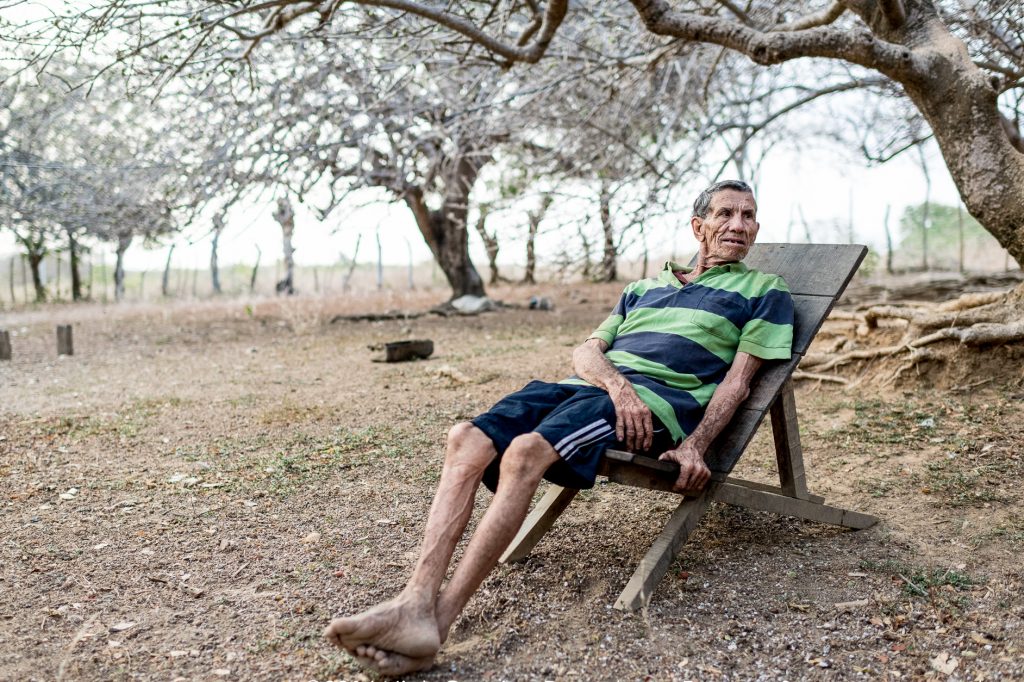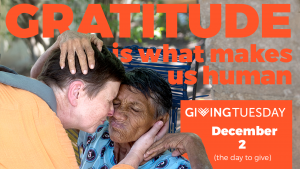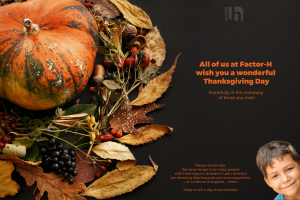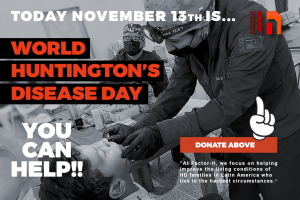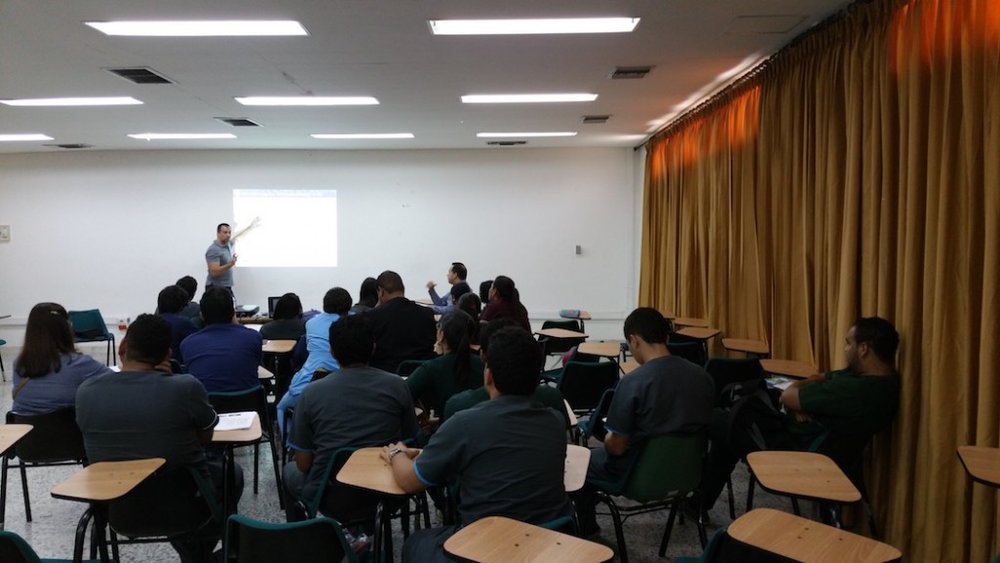
Barranquilla is close to Juan de Acosta, the second largest cluster of HD patients in the world (to our knowledge). The prevalence was reported quite a few years ago by Dr. Daza in one of the few published works describing the prevalence of HD in Colombia. I had met Dr. Daza in 2013 when I first visited Juan de Acosta. He then held a meeting where I spoke about my scientific work in front of a few other local physicians and a number of patients. What I remember from that meeting was the familiar tension I felt in Maracaibo, due to the frustration of the patients at not being able to access the genetic test, even though they had donated blood in order for Dr. Daza to estimate the prevalence. Given that these studies were for research purposes, Dr. Daza could not provide the results back to the individuals who participated in the study. Clearly, when I visited, they still wanted the results. They simply did not understand (or did not accept) the fact that they could not access them. This is a recurring observation and made me think about whether consent forms in these populations are ever truly consented. Unfortunately, Dr. Daza was murdered in 2015 due to retribution for his brother’s political decisions, I am told. This ended a period of relative care for the Juan de Acosta community. Dr. Daza, according to Doris Echeverria, the president of the local association and the visible voice of this large community, was very caring. He would visit the patients regularly in their homes, and would play the guitar and sing to them. Apparently he was a very good musician.
Doris and I started off with difficulties, after my first visit in 2013. She did not know me well, and was upset about how I handled certain things via AcolpEH, the only organization with whom I was working then. I made mistakes in how I tried to communicate with the patients, some of whom are her relatives. She’ s herself at risk, her father has been suffering with HD for 20 years, and she has seen so many relatives die of HD, including young nephews and nieces, uncles and aunts, siblings. It was only now, after this trip, that I began to understand why she had been so frustrated, protective of them, and angry. I would be too, if I had seen so many of my loved ones die without being able to get them adequate help. During the trip, I think we began to understand each other – she started to believe I was a caring person who wanted to help. I hope never to cause unwanted harm to the patients. Sometimes this can happen as they are used to people coming and leaving. Sometimes the news portrays them in ways that make them feel worse, as if they are ‘cursed’. They are not cursed, they have a disease, and deserve help and compassion. One learns so much from just watching and listening.
During the day in Juan de Acosta, we started the visit with a “town hall’ meeting, and we spoke about HD and our work. About 40-50 people attended and listened intensely to what we had to say. The local hospital is new and adequate; however, they lack a local specialist. Part of the work we need to do is to train local health care professionals there. Some psychologists and nutritionists from Barraqnuilla came, and we hope together we can begin to educate both the professionals and the families about the multiple aspects of the disease. Particularly, young people need help coping with their family situation, and their own status at-risk to develop HD. A local council member spoke about trying to pass legislation to protect them. In spite of his good words, tension exists between the local politicians and the families. A lot of words and little concrete action fuels resentment here.
After the meeting, we spent a few hours relaxing by the ocean and having a wonderful seafood meal. This region is well known for its nice sandy beaches and tropical climate. It was a nice way to connect with the local association, Doris and her relatives, who took us around to see affected families here. We visited about 8-9 families, and delivered donations to them. This time, besides Dara the journalist from The Guardian, a photographer (Nick) came from Miami to shoot some of the patients and their families. Also, Roger Cachope, a Colombian physician scientist who works with me at CHDI, and Dr. Gustavo Barrios, a neurologist from Bogotá, came with us. Up and down the hills of Juan de Acosta, across fields, we visited this town where so many patients live and so many have already left to escape the social alienation that many have felt. They disperse and probably start new areas of Huntington’s throughout Colombia.
Doris’ father was also her idol. For her he was a figure of love and strength. She told us stories of her childhood, and how the disease affected her immediate family and the entire town. How people would leave their wives when they started having symptoms, how people would be shunned and kept behind the houses, how one of her relatives burned herself alive… the stories go on. When we visited her home, we saw her father – he was in a terminal stage and in poor condition. Doris’ mum cried when we were there. 20 years of struggling with the disease at home is very hard. It was obvious he was always loved by his family. My admiration for these families is sincere. We have lots to learn from the true sense of commitment, care and love that these women (and they are mostly women) show towards the patients.
A week after we left Juan de Acosta, Doris’ father died. Factor-H covered some of the funeral expenses. Our condolences go to her family.
Delivering the donations took us well into the evening. You can read more about the stories and see some of the images in The Guardian article.I am only posting one pic of an HD patient and his family. He makes a living by selling eggs by the highway. Doris and her aunt told me this is what they also used to do to help their family, as Doris’ father became ill in his 30s. Doris grew up fast, taking care of her sisters and her father, while putting herself through school, university and post-graduate school. In this picture, you see Nick taking some of the pictures that would then appear in The Guardian article. While the families were hesitant at first, thanks to Doris we were able to get them to agree to pose for the article, and sign the consent forms. I am bringing them back framed pictures.
Below I list some notes I took from this day.
Beltran is a 6-six year old kid, a friend of the Echeverria family. As we were driving around to find patients, Doris asked him to jump in the van and help us find Jose’s house. Beltran is friends with Jose’s middle son, who is also 6. Beltran is a small child, his skin dark from being outside all the time, and was wearing a Colombian national football team t-shirt, dirty. His hair was short, cropped and unkempt. He was extraordinarily cute. He would wave his hand at the driver to let him know he ‘needed to keep going’. When we gave him a chocolate bar, he stopped directing the driver and we almost passed the dirt road up the hill where Jose leaves with his children.
Jose is 34, a father of 3 (a girl of 13, a boy of 6 and a baby girl of 2). He started showing symptoms 2 years ago, just about the time his wife had the youngest baby girl. He is educated, handsome, and smart, and his chorea is now very evident, both in his legs, hands, and arms. He suffers from facial dystonia, although he is very articulate. He is an angry person now. He lost his job and now stays at home taking care of the kids. His wife finds odd jobs in Barranquilla (about an hour’s drive) and has to leave home so they can afford to eat. Jose went through a serious depression after he lost his job. He feels he cannot contribute to his children’s welfare. He described being unable to pay for the school needs. He cried when describing that he is going crazy trying to find medication for his chorea. He has been waiting 6 months now to access tetrabenazine (TBZ) which would manage his movements for the time being. The price of TBZ in Colombia is about $400 month, and during our travels it’s become obvious that many patients cannot afford it or easily obtain it from the government (as it is not a list of ‘essential medications’). This is a real issue, particularly for the (many) patients who live in remote rural areas, with no easy access to a medical center and no access to transportation. Without being able to get to designated places, they can’t access the medicines, and without them, they are doomed to a life of misfortune and abandonment. Even if the existing medications are merely symptomatic, I have seen they make a real difference to them. Beyond the symptomatic effects, they do afford them with a sense of hope, with a sense that they are being treated. As Doris said earlier in the day, tetrabenazine changed her father’s life early on in the disease course ‘because he could give us hugs again and be held without all the movements”. This is something I will never forget, and will never say that TBZ is not a good drug.
For some, it offers real benefits, and not only from a physical perspective.
I finally understood that benefits to the patients and the families come from unexpected places, one that we cannot understand unless we learn from their experience. Nothing in the medical or scientific literature would ever inform us of this wonderful effect of TBZ.
Jose did not want to answer any questions when our colleagues from The Guardian asked to speak to him. He said he would talk to doctors, but not to journalists. He is ashamed of his condition, of his sense of dependency, of being watched by his neighbors. His house is in a small dirt road, filled with stones going up the hill. The houses are built on both sides of the road, merely 9 feet apart. There is no escaping the neighbors’ gaze when stumbling up and down the hill, navigating around the stones. He does not have any transportation, so using the many motorbike ‘taxis’ around is the only way for him to reach his destinations. We brought him some food and cleaning supplies with the money I was able to raise from donations. It was not much; it won’t change his life in any significant manner. When speaking to him and holding his hand, he seemed to get calmer. He needs anxiolytic medication. He needs more hope and support that we can now provide.
After we finished out visit to Jose, Beltran waved at me to come to the van. He was very insistent.
I walked over, wondering what he wanted. He whispered in my ear if I could give him something that was in the bags with food that we were delivering to the families. He was pointing to a roll of toilet paper. I was surprised and pointed at it in disbelief. Is this what you want? He nodded and smiled. I gave it to him. He hugged me and gave me a long kiss in my cheek, and run away to his house. I was saddened, that a 6-year old child’s mind is focused on getting toilet paper (and not food) says a lot about his living conditions. These things break my heart. He later came back and asked me when I would return. I told him I promised I would return.
I hope I can keep those promises and I help see him grow into a stable, happy man.
Roberto used to work picking stones from the river next to his house. A house that gets flooded every year because that same river overflows during the rainy period. Many Colombian towns and cities have been expanding with little urban planning. The differences between the rainy and dry seasons lead to frequent floods. For impoverished people, this is disastrous as they can easily lose everything in one flood. When one combines this with the fact that patients have difficulties walking (and eventually can’t be mobile at all), one can see the gravity of the situation. Roberto came to hear us at the local hospital earlier in the day. I sat next to him during the entire morning. He has early stage HD, without much chorea but with facial dystonia and has difficulties walking. He speaks little, but smiles often. He is a very handsome man, dark skin and hair, gentle face. He reminded our friend Dara (the Guardian journalist) of a Bob Marley with short hair. He smiled when he was told and said that people had told him before too. His wife and two kids (ages 16 and 13 I think) allowed us to take family photographs. Initially they were serious and nervous. They are not used to being watched and photographed. I yelled at them that they should smile, that they were a wonderfully handsome family. They did. And the portraits were beautiful and inspiring.
We will send them frame pictures. I believe they will look at them in the years to come and will smile. Roberto will not look like this for much longer – the disease will change his facial features and his muscular build. But they will always have this photographs to remind them how handsome and kind their father was.
